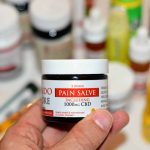Some Common Types of Tests Done In Strep Throat Infection
Strep throat is a bacterial infection that can cause painful, inflamed tonsils. While the symptoms and signs of strep are similar to those of other types of tonsillitis, the most important difference between the two conditions is the ability of streptococcus bacteria to produce a toxin called “exotoxin A”.
While both strep and other tonsillitis can be caused by viruses, only strep produces exotoxin A, which is why it should always be considered when you have an infection in your throat.
The pain associated with strep throat is often described as a burning sensation. This pain will usually begin at the back of your tongue or throat (where the tonsils are located), but it may also extend into the ear canal.
As with any form of tonsillectomy, there are some potential complications that need to be discussed with your physician. These include
Chronic post-operative pain
Hemorrhage after the procedure
Damage to nearby nerves
A typical course for strep throat usually involves 5 to 10 days of treatment with antibiotics. However, this may vary depending on such factors as how long the throat has been infected, how severe the infection is, whether or not there has been an additional complication from surgery, and so on.
There are different strep throat tests available, including the following:
Direct testing
This method involves swabbing the patient’s throat with a sterile cotton swab and then placing the sample onto a test plate. Once the sample is placed on the plate, it is incubated to allow the strep bacteria to grow. The presence of colonies indicates the presence of the pathogen.

Rapid antigen detection
When you undergo rapid antigen testing, a small amount of fluid is collected via a syringe and then put on a test strip. When the patient exhales, the liquid flows out of the strip and into a special device where it is analyzed using optical technology. If there is a positive result, the doctor will know immediately and the patient can begin treatment immediately.
Polymerase chain reaction (PCR)
In PCR testing, a small sample of fluid is taken from the throat and sent to the lab for analysis. There, the samples are incubated with enzymes that break up DNA strands. The pieces are then used to make millions of copies of DNA. These copies are then tested against known DNA sequences that indicate the presence of strep.
Nucleic acid amplification
Like PCR testing, nucleic acid amplification (NAAT) is another way to determine if you have strep. In NAAT testing, a small amount of fluid is put on a test plate. Then, the plate is heated until the fluid changes color. Depending on what type of NAAT test is being conducted, a variety of colors may appear. If a positive result shows up, the doctor will know right away and can start treatment.
These tests all work well, but none of them detect just one type of strep organism. Instead, they detect almost everything that is causing a sore throat. So, even though they show that you have strep, they don’t provide information about the exact strain of the pathogen.
If you have a chronic problem with strep, you may want to talk to a doctor about undergoing genetic sequencing. This process allows doctors to determine exactly what type of strep you have. They can then prescribe the appropriate antibiotic therapy.

Once you have completed your treatment, you must continue to take antibiotics to prevent bacterial re-infection. This can happen if you develop a cold or other respiratory infection while you are still taking antibiotics or if you come down with strep again without having finished your full course of treatment.
Unfortunately, there are no vaccines available for strep throat, although they are being developed every day. So, the best way to protect yourself is to stay healthy and avoid getting sick in the first place. Of course, this means practicing good hygiene, eating well, staying active, and avoiding people who are sick. If you do get sick, remember that you should never share personal items like razors, toothbrushes, towels, and so forth.
You might also consider getting screened for strep throat annually. This way, you won’t end up developing a serious condition due to untreated strep that could lead to permanent damage or even death.
There are several ways to treat strep throat. Most treatments involve taking antibiotics orally or by injection. You may also receive an intravenous infusion of fluids along with antibiotics. Some patients may require hospitalization in order to complete their treatment.
One thing to keep in mind is that antibiotics are generally effective only against bacteria, not viruses. Therefore, if you have strep throat and also have a cold or some other virus going around, the antibiotics will likely only lessen the symptoms of the illness and not eliminate it entirely.
Another factor to consider is that antibiotics have side effects. For example, antibiotics can irritate the stomach lining, cause diarrhea, upset the balance of the intestinal flora, and so on. If you decide to use antibiotics for treating strep throat, talk to your doctor before beginning treatment in order to find the right dose for you.
You should also discuss with your doctor possible alternative treatments. One option is homeopathic medicine. Homeopathy focuses on treating the whole person instead of focusing on eliminating the symptoms of disease. It does this by using natural substances to stimulate the body’s own healing processes.
Another option is herbal medicine. Herbs like echinacea, goldenseal, and garlic are thought to help the immune system fight off infection. Other herbs may be helpful too, like licorice root.
If you ever see signs of strep throat in your body then you have to take immediate action on it. As if you don’t do this then your infection will become worse than before. After consulting with a professional doctor then they will tell you all of the above different types of treatments which are being done in this infection.



